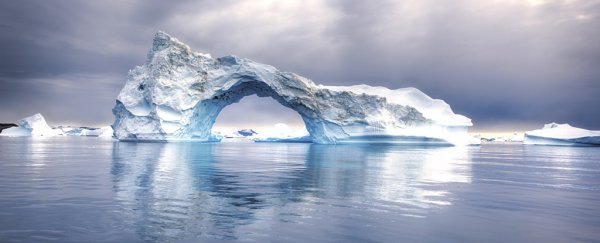In Game of Thrones, the men of the Night's Watch defend the Wall: a towering structure designed to safeguard civilisation from unseen forces lurking in the frozen wilderness.
In the real world, an equally vast, impenetrable barrier could save us from a fate no less catastrophic, scientists say – not because winter is coming, but for the exact opposite reason.
In the grim light of record-breaking temperatures and carbon dioxide levels, with estimates of sea-level rise promising displacement and chaotic inundation, scientists say we must consider alternative strategies to keep rising waters at bay – while humanity figures out how to quit our dangerous addiction to burning fossil fuels.
This is the largely hypothetical realm of geoengineering, also known as climate engineering: the science of deliberate, large-scale interventions to manufacture changes in the environment that can address and reverse the effects of global warming.
Most of the time, geoengineering concerns atmospheric science, with researchers exploring the viability of things like injecting aerosols into the stratosphere in the hopes it might reflect sunlight away from Earth, helping the planet to cool down.
This time around, researchers are proposing localised, grounded solutions, but while they might be smaller in scope, they're still incredibly vast engineering projects – each would cost tens of billions of dollars to make real, although the money spent could help save shorelines from the rising tide of tomorrow.
Writing in Nature, a team led by climate scientist John C. Moore from China's Beijing Normal University say geoengineering glaciers in Greenland and Antarctica could prevent most of their ice melting into the ocean, potentially for centuries, giving us a much-needed chance to figure out how to reverse global warming.
"We understand the hesitancy to interfere with glaciers — as glaciologists, we know the pristine beauty of these places," the group explains.
"But we have also stood on ice shelves that are now open ocean. If the world does nothing, ice sheets will keep shrinking and the losses will accelerate."
To prevent such a worsening scenario, the researchers outline three hypothetical geoengineering projects that could hypothetically delay the loss of the world's rapidly diminishing ice sheets.
The first one is the wall. To stem melting at the Jakobshavn glacier in western Greenland – the biggest glacial contributor to sea-level rise in the Northern Hemisphere – the team wants to build a mammoth wall underwater.
Standing 100 metres high above the surface of the ocean floor, this epic barrier would stretch the 5-kilometre fjord in front of the Jakobshavn glacier, where it could prevent warm Atlantic currents from reaching and heating the glacier's sensitive base.
"Construction would be arduous and potentially hazardous in cold waters littered with icebergs," the team acknowledges, but explain that ultimately less than a tenth of the material used to build the Suez Canal would be required.
"Building such a berm would tell us whether glacial geoengineering is feasible, or if there would be unanticipated consequences."
A much larger project would be to construct vast artificial islands buttressing the Pine Island and Thwaites glaciers in West Antarctica, which the researchers explain are the two largest potential sources of sea-level rise over the next 200 years, potentially contributing as much as 4 centimetres annually to global sea-level rise by 2150.
These vast artificial platforms, standing 300 metres high from the seabed, would jam the ice shelves in front of the glacier, limiting their ability to collapse into ocean.
A third approach could involve pumping or otherwise removing water at the base of glaciers hundreds of metres below ground, which would limit the amount glacier ice slides over its bedrock, easing friction (and therefore heat and melting processes).
The researchers aren't proposing these immense geoengineering projects should be implemented right away, as there's still a lot we don't know about how such concepts could be executed properly – and safely.
Because of that, what they are saying is now is the time for glaciologists, engineers, and scientists generally to look into the viability of these kinds of solutions – all the while never losing sight of that huge, hot elephant in the room, which is the reason we're in this situation in the first place.
"It's important to emphasise that any sort of geoengineering is not a substitute for emissions reductions," one of the team, glaciologist Michael Wolovick from Princeton University, told The Atlantic in January.
"Rising sea levels are not the only negative consequence of climate change, and glacial geoengineering doesn't do anything about thermal expansion, much less ocean acidification and heat waves."
The research is reported in Nature.
